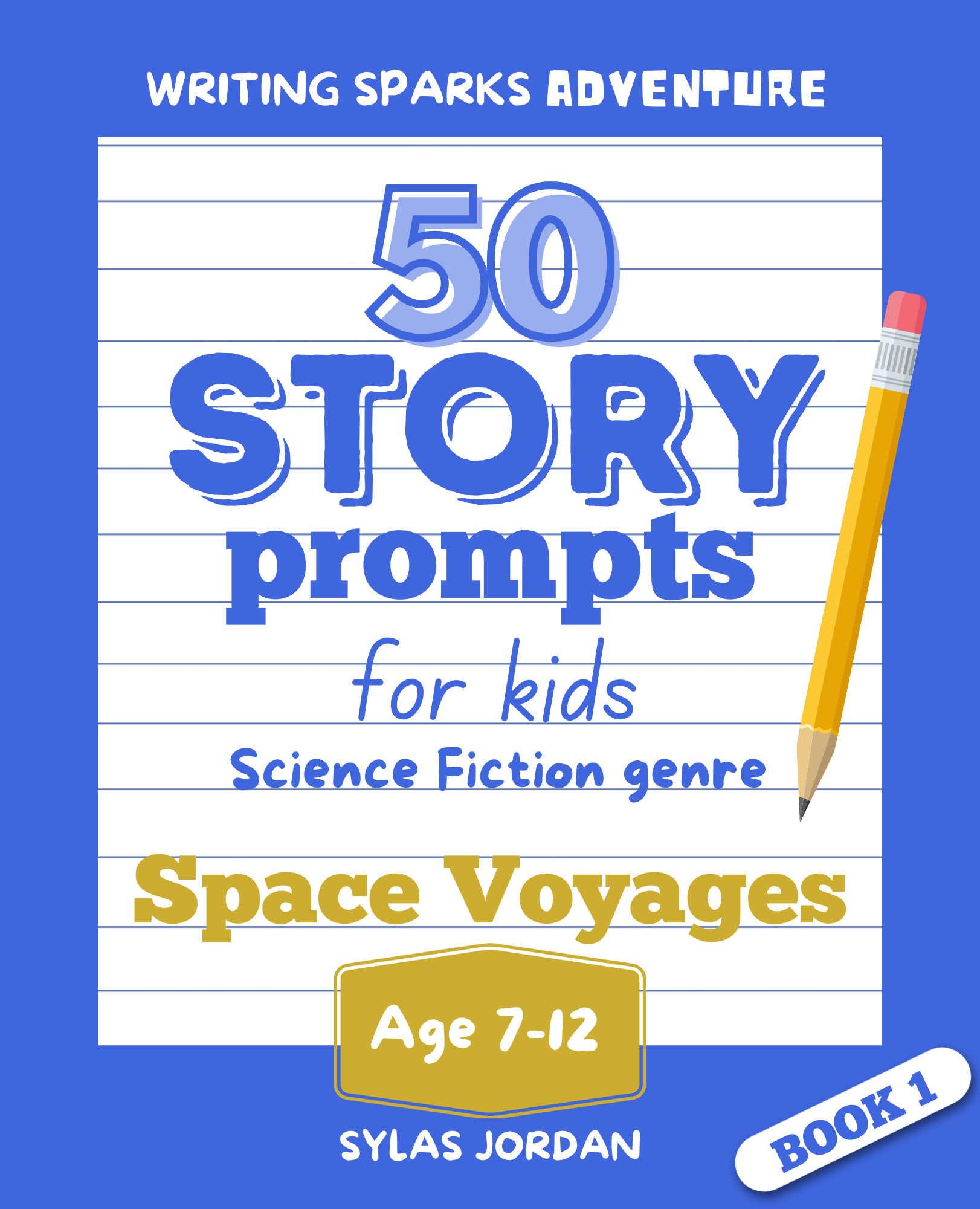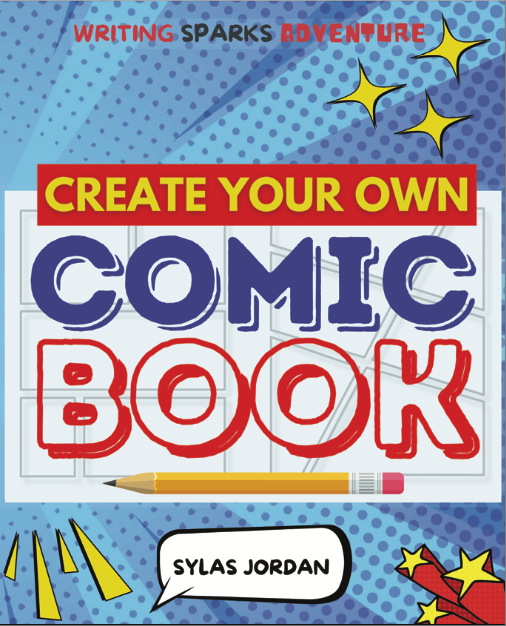Introduction
Imagination is the canvas on which children paint their dreams and ideas. It’s a crucial aspect of their cognitive development, influencing creativity, problem-solving skills, and emotional intelligence. For young writers, especially those aged 7-12, nurturing this imagination is key to developing their unique voice and storytelling abilities. Creative writing not only provides an outlet for their boundless energy and ideas but also aids in their overall academic and personal growth. This blog post offers parents and educators insightful tips and engaging activities to spark the imaginations of young writers. From setting up creative spaces to using innovative writing prompts, we will explore various strategies to inspire and cultivate a love for writing in children, ensuring they have the tools to express themselves imaginatively and confidently.
Understanding Child Creativity
Creativity in children is not just a source of entertainment; it’s a crucial component of their overall development, influencing their artistic abilities, cognitive growth, and emotional intelligence. Imaginative play, closely related to creative writing, aids in developing vital life skills such as creativity, independence, and problem-solving. It also enhances social and emotional development, artistic capabilities, physical development, and language skills.
Creative writing offers a structured yet expansive playground for young minds. The process of creative writing aligns with the cognitive development stages of children. At different ages, their imaginative capabilities evolve—from simple make-believe play to more complex story creation. This progression is mirrored in their writing, where they initially scribble random thoughts and eventually construct elaborate narratives. This evolution reflects their growing imaginative capacity and their understanding of the world around them.
Creative writing serves as a bridge between a child’s internal imaginative world and external reality. By articulating their thoughts through stories and poems, children learn to communicate their ideas and feelings more effectively. This expression significantly impacts their real-life interactions and emotional intelligence, fostering empathy, a deeper understanding of others’ perspectives, and a heightened ability to articulate their viewpoints.
Creating a Conducive Environment for Creativity

Fostering a child’s imagination and creative writing skills goes beyond providing them with paper and pencils. It involves creating an environment where ideas can flourish and storytelling becomes a natural part of their daily life. Here are some strategies:
- Designate a Creative Space: A specific area dedicated to creative activities can boost a child’s willingness to engage in writing and other imaginative tasks. This space doesn’t have to be large—a small corner in their room or a portable box with creative writing tools can suffice.
- Provide Diverse Materials: Expand the range of materials beyond paper and pens to include colorful markers, crayons, old magazines for collages, and digital tools like tablets or laptops. These varied tools can inspire different forms of storytelling and artistic expression. For example, our Create Your Own Comic Book can be a great addition to their creative space.
- Encourage Imaginative Play: Role-playing, dress-up games, and other forms of pretend play enhance creativity and develop language skills, social understanding, and emotional intelligence. Understanding why pretend play is essential for child development can help you support kids as they learn and grow. Read more about the importance of pretend play here.
- Integrate Technology Wisely: Use interactive storytelling apps, digital books, and educational games to complement traditional writing methods, ensuring a balanced approach to screen time.
- Create a Reading Routine: Encourage regular reading habits with age-appropriate and diverse books to inspire writing. Discussing these stories can further enhance their imagination and understanding of different storytelling techniques.
- Positive Reinforcement: Celebrate their creative efforts, praise their unique ideas, and display their works to boost their confidence and motivation.
- Be a Part of the Creative Process: Engage with your child during their creative activities by participating in their storytelling and showing genuine interest in their imaginative world.
Writing Prompts to Spark Imagination
Creative writing prompts are a fantastic way to spark a child’s imagination. Here are several prompts to stimulate young writers:
- Adventure in a Magical Land: Encourage your child to write a story set in a magical land, describing the landscape, creatures, and a young hero’s quest. For more inspiration, check out our Fantasy Prompt Book.
- A Day as an Animal: Prompt them to write a story from the perspective of an animal they would choose to be for a day, exploring the adventures and challenges they face.
- Role-Playing Stories: Encourage role-playing scenarios and have children write stories based on their pretend play experiences. Our Mystery Prompt Book can provide great scenarios for them to explore.
These prompts allow children to take their stories in any direction, helping them develop writing skills, expand their vocabulary, and express their unique perspectives.
Interactive and Engaging Writing Activities

Creative writing doesn’t always have to be solitary. Interactive and engaging writing activities can add an element of fun and collaboration. Here are several activities:
- Storytelling Chain: Each family member adds a sentence to a story, building it collaboratively.
- Picture-Inspired Stories: Use pictures or photographs as prompts for stories, encouraging children to think creatively about the visuals they observe.
- Character Building Workshop: Children create and describe their own characters, developing detailed personalities and unique abilities. Our Historical Fiction Prompt Book is perfect for creating interesting characters and scenarios.
- Create Your Own Comic Book: Children draw panels, add dialogue, and narrate a story through pictures and words.
- Writing to Music: Play instrumental music and ask children to write something inspired by the music, connecting emotions with writing. Our Create Your Own Comic Book is a great tool for this activity.
- Letter Writing to Imaginary Friends: Encourage children to write letters to imaginary friends or characters they’ve created, exploring their personalities and articulating thoughts and emotions.
- Gratitude Journaling: Maintaining a gratitude journal helps children focus on the positive aspects of their lives while enhancing their writing skills.
- Collaborative Story Blog: Set up a blog where children can post their stories and read what others have written, fostering a supportive community of young writers.
Incorporating Technology and Tools in Creative Writing
Integrating technology in creative writing can engage young writers effectively. Here are some ways:
- Writing Apps and Software: Introduce age-appropriate writing apps and software with features like word suggestions, story starters, and interactive prompts.
- Online Writing Platforms: Provide a safe space for children to publish their stories, receive feedback, and read others’ work, fostering community and collaboration.
- Digital Storytelling: Combine traditional storytelling with multimedia elements such as images, music, and voiceover.
- Interactive eBooks and Digital Libraries: Access digital libraries and interactive eBooks to inspire young writers with a variety of books and stories.
- Educational Games and Challenges: Use online educational games focusing on creative writing skills to make learning fun and interactive.
- Blogging for Kids: Encourage children to start a blog about their interests, practicing writing regularly.
- Video and Podcast Scripts: Children can create scripts for videos or podcasts, learning to structure a story or conversation.
- Balance with Traditional Methods: Encourage handwritten journals, letters, or physical scrapbooks to ensure a personal connection with writing by hand.
Encouraging Reading to Inspire Writing
Reading and writing are closely connected. Here’s how to encourage reading to inspire young writers:
- Diverse Reading Material: Provide various reading materials, including fiction, non-fiction, poetry, graphic novels, and magazines.
- Regular Reading Time: Establish a consistent reading routine to embed a love for stories and storytelling.
- Discuss and Connect: Engage children in discussions about the plot, characters, and themes of the stories they read.
- Read Aloud Sessions: Organise sessions where children can listen to stories being read, helping them understand narrative flow and the power of voice.
- Writing Inspired by Reading: Encourage children to write stories or characters inspired by what they read.
- Library Visits and Book Clubs: Regular visits to the library or participation in a book club can motivate children to explore new books and share their thoughts. Our Sports Fiction Prompt Book can be a great starting point for sports enthusiasts.
Conclusion and Encouragement for Parents and Educators
In our journey to spark a child’s imagination and enhance their creative writing skills, we’ve explored understanding child creativity, creating a conducive environment, engaging in imaginative writing prompts, participating in interactive activities, and incorporating technology. We’ve also highlighted the importance of reading to inspire writing.
Key Takeaways:
- Child Creativity is Multifaceted: Creativity in children blends imagination, cognitive skills, and emotional expression.
- Environment Matters: Creating a space that encourages creativity is essential, including providing diverse materials and fostering imaginative play.
- Prompts and Activities: Writing prompts and interactive activities stimulate imagination and make writing fun and engaging.
- Technology as an Ally: Embrace technology in moderation to enhance the creative writing experience.
- Reading Inspires Writing: A strong reading habit exposes children to various writing styles and ideas, fuelling their creativity.
Encouragement for Parents and Educators:
As parents and educators, your role in guiding and supporting young writers is invaluable. Encourage their efforts, participate in their creative process, and provide them with the resources they need to flourish. Celebrate their individuality and the diverse ways they express themselves through writing.
By providing the right tools, environment, and encouragement, we can foster a generation of confident, expressive, and imaginative individuals. Embrace this journey with patience, enthusiasm, and a steadfast belief in the creative potential of every child.
Ready to ignite your child’s creativity even further? Explore our range of interactive books and creative writing tools designed to inspire young minds. Discover how our resources can turn every page into a new adventure. Check out our collection today!





